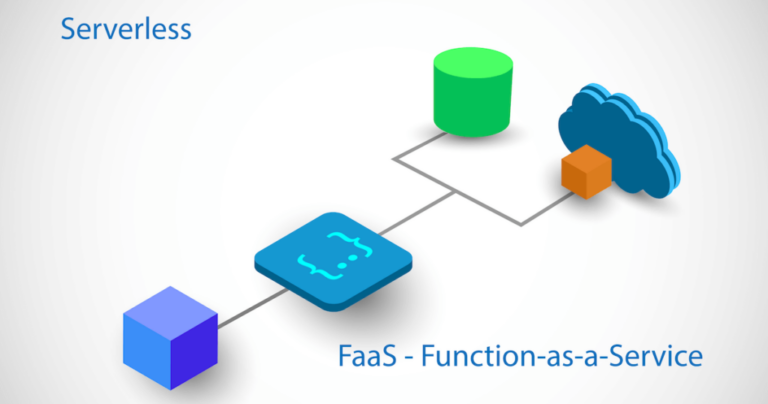The growing world of the cloud-native ecosystem, the increasing number of open-source projects, and the foresight of companies to transform applications have multiplied demands manifolds for service mesh. Service mesh is used in cloud application development to connect, secure and monitor microservices.
Cloud applications are built-in container-based microservices. Microservices are loosely coupled components of an application that connects and communicates with each other with the help of well-defined APIs. However, microservices and several distributed, loosely coupled components create management and communication challenges. Service mesh is the solution to these challenges that keep microservices airtight.
Istio Service Mesh And How Does It Work?
Istio is a service mesh technology that helps connect, secure, control, and observe services.
In a microservices-built application, every single microservice runs independently in containers. Though the services are isolated, they have many interactions with each other. Istio service mesh in this situation allows to locate, enable, and control these communications with the help of a side-car proxy.
Istio facilitates a side-car container within Pod that performs as a proxy. This way, the main container interacts with the other container using the proxy. As all requests are filtered through the proxy, it allows you to control the traffic and collect all data. It is also possible to encrypt communication between Pods and impose identity and access management with an individual control plane.
To know more about service mesh and the benefits of using a service mesh in today’s application architecture, click here.
Istio Service Mesh Architecture
A data plane and a control plane are used in Istio architecture. Let’s understand what these are and why they are important.
Istio data plane
The Istio data plane deploys a side-car proxy within the environment. The side-car proxy stands beside a microservice and routes requests to and from other proxies. These proxies together form a mesh network that intercepts network communication between microservices.
Istio control plane
The control plane in Istio manages and configures proxies to route traffic. Moreover, it is also used to configure components to enforce policies and collect telemetry.
Core Functionalities Of Istio
Istio has the following core functionalities:
Traffic Management
Istio uses envoy proxy or side-car proxy along with Ingress and Egress gateways. With the help of these, Istio manages traffic and develops routing policies enabling traffic control and defining interactions between services. Additionally, the control plane here allows you to do amazing things such as implementing timeouts, circuit breakers, retries, and lots more things, all by changing configurations. You can also do A/B testing, canary deployments and staged rollout with traffic splitting based on percentages.
It provides simple control along with allowing you to slowly roll out a release and move gradually from an existing version (blue) to a new version (green) all out of the box with simple controls. It also supports doing live traffic mirroring to your test instances. It brings better live insights, helps identify potential problems issues even before you go live.
Security Capabilities
Istio service mesh secures microservices with the help of side-car proxy by establishing identity access management between Pods through mutual TLS. This setup provides efficient traffic encryption between Pods and helps defend against man-in-the-middle attacks. It establishes a mutual authentication between the front end and back end. In that situation, even if one of the Pods is compromised, the attack could not affect the rest of the applications.
Istio also supports fine-grained policies that help limit access and also has an in-built feature that determines what is going on in a cluster with the help of auditing tools that Kubernetes lacks at this point.
Observability
Istio keeps track of traffic passed through the Pods by using envoy side-car proxies. Using the feature, it collects telemetry details from the services. The telemetry details not just help gather insights about service behavior but also helps develop knowledge about future possibilities essential to optimize applications. It also consolidates app logs and also allows traffic tracing through multiple microservices. It helps identify issues faster and allows you to isolate the faulty service and fix it.
Istio As Kubernetes Service Mesh Standard
The fact is Istio is not alone in the list of available open-source frameworks helping monitor traffic between individual components, but it is winning the game. One of the biggest reasons is its powerful symbiosis with Kubernetes. According to some industry observers, Istio has become Kubernetes service mesh standard, just like Kubernetes made itself as a standard for containarision. Istio serves the same purpose for service mesh.
Conclusion
- Istio is considered the equivalent of TCP/IP, addressing application network communication, security and visibility issues.
- In today’s time, Istio is the most popular service mesh implementation that relies on Kubernetes. Moreover, it is scalable to virtual machine loads.
- Istio acts as the network layer of the cloud-native infrastructure and is transparent to applications.
The best thing about Istio service mesh is that it is Kubernetes-aware. Moreover, it doesn’t burden developers with worrying about the security and management details of their implementation. Additionally, developers can build apps as a standard Kubernetes deployment, and Istio automatically injects side-car containers into the Pods. The operations and security team leverage the feature and enforce policies to the traffic and help secure and operate the application. It provides a win-win situation for everyone. Istio helps monitor microservices without killing the productivity of the development team.




